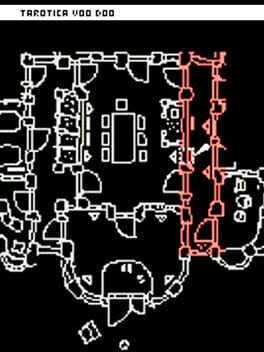The story behind the development of this game is rather cute, much of which is outlined in the wonderful design document it comes packaged with. Development started in 1993 for the MSX as a hobbyist undertaking and reached a presentable state around 1997, where it was intended to be shown off at Comiket. Sadly, Ikushi Togo's disk drive crashed, causing a dramatic loss of the machine language source code and other data. After a lull of many years where Tarotica Voo Doo would lay dormant, an old demo rom was eventually showcased at Comiket in 2014 and received such tremendous support and praise, the developer realised he had to see the game through. Rather than taking the comparatively easy route and developing the game with more modern tools, they instead stuck to their guns and rewrote the game completely from scratch, once again for the MSX.
A self-imposed challenge that paid dividends - Tarotica Voo Doo operates under its hardware restrictions with such clear clarity of intent, filled with design quirks rare and unseen in games old and new. Where the visual style is indeed crude; being the product of mouse-drawn pixel art, it complements the uniquely tactile control scheme to the point where it feels like flicking through charming flipbook animations - watching the mansion map fill out in the same vein as a growing doodle on a bored schoolkid’s workbook margin or exploratory boardgame. The developer has expressed that they find games less interesting when actions are automated, and Tarotica Voo Doo’s puzzling and combat incorporates an utterly fascinating control scheme that demands deliberate movement and interaction. It’s no surprise to me that the developer has their eyes on getting a project to the Playmate system.
I wanted to be a little vague, this is a 2-hour game that deserves to be played and appreciated. I swear to god I think this mansion has left an imprint on me.
A self-imposed challenge that paid dividends - Tarotica Voo Doo operates under its hardware restrictions with such clear clarity of intent, filled with design quirks rare and unseen in games old and new. Where the visual style is indeed crude; being the product of mouse-drawn pixel art, it complements the uniquely tactile control scheme to the point where it feels like flicking through charming flipbook animations - watching the mansion map fill out in the same vein as a growing doodle on a bored schoolkid’s workbook margin or exploratory boardgame. The developer has expressed that they find games less interesting when actions are automated, and Tarotica Voo Doo’s puzzling and combat incorporates an utterly fascinating control scheme that demands deliberate movement and interaction. It’s no surprise to me that the developer has their eyes on getting a project to the Playmate system.
I wanted to be a little vague, this is a 2-hour game that deserves to be played and appreciated. I swear to god I think this mansion has left an imprint on me.
